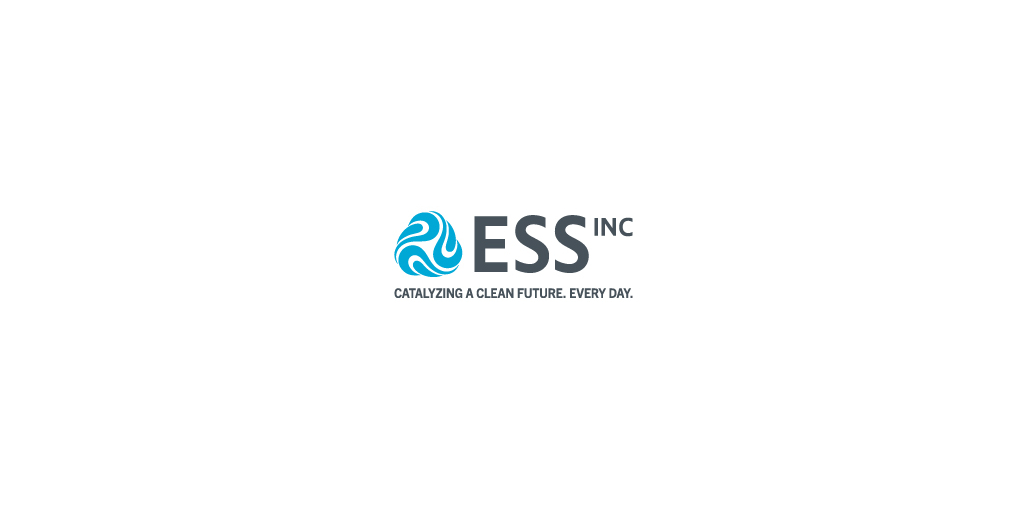Commissioning of ESS Energy Warehouse will support electrification of ground operations and reduce emissions at Amsterdam Airport Schiphol
AMSTERDAM–(BUSINESS WIRE)–ESS Tech, Inc. (ESS) (NYSE: GWH), a leading manufacturer of long-duration energy storage (LDES) systems for commercial and utility-scale applications, today announced that commissioning has been completed on the initial system installed at Amsterdam Airport Schiphol. This marks the launch of a project designed to reduce carbon emissions by electrifying ground operations.
The ESS system will enable Amsterdam Airport Schiphol to phase out polluting diesel ground power units that currently supply electrical power to aircraft while parked at airport gates. These will be replaced with Electric Ground Power Units (E-GPUs). The electrification of ground operations will reduce carbon emissions and air pollution, providing a model for airports worldwide seeking to reduce the climate impacts of air transportation.
The project at Amsterdam Airport Schiphol will support the Royal Schiphol Group’s ambitious climate targets and is supported by the TULIPS consortium. TULIPS is an EU-funded consortium of airports across Europe seeking to accelerate the deployment of renewable energy within Europe’s aviation sector.
“Schiphol intends to be a zero-emission airport by 2030 across our buildings, assets and equipment,” said Oscar Maan, Royal Schiphol Group manager of innovation. “Cutting edge, clean technology such as ESS’ iron flow battery system enables us to decarbonize ground operations and is a vital step for us to progress towards this sustainable future. As leaders of the TULIPS consortium, we hope this project demonstrates how clean technology can be implemented in the aviation industry throughout Europe.”
Organizations are increasingly turning to LDES solutions, such as ESS’ iron flow technology which powers the Energy Warehouse, that provide increased flexibility and longer design-life than lithium-ion technology. The project will demonstrate how LDES can enable the electrification of ground support equipment, such as the E-GPUs, while reducing the need to upgrade regional grid infrastructure. ESS’ iron flow technology provides cost-effective LDES ideal for applications that require up to twelve hours of flexible energy capacity. ESS technology was selected due to its inherent fire safety, making it suitable for use in close proximity to passenger aircraft.
“Amsterdam Airport Schiphol has set an ambitious goal for decarbonization and has provided great leadership in taking the necessary actions to make it real,” said Eric Dresselhuys, CEO of ESS. “This project provides a blueprint for LDES to safely provide clean, reliable energy in airport operations and reduce fossil fuel dependence. This pioneering project will encourage other European airports to follow the TULIPS lead and deploy technologies to achieve climate targets and accelerate air industry decarbonization.”
About ESS, Inc.
At ESS (NYSE: GWH), our mission is to accelerate global decarbonization by providing safe, sustainable LDES that powers people, communities and businesses with clean, renewable energy anytime and anywhere it’s needed. As more renewable energy is added to the grid, LDES is essential to providing the reliability and resiliency we need when the sun is not shining and the wind is not blowing.
Our technology uses earth-abundant iron, salt and water to deliver environmentally safe solutions capable of providing up to 12 hours of flexible energy capacity for commercial and utility-scale energy storage applications. Established in 2011, ESS Inc. enables project developers, independent power producers, utilities and other large energy users to deploy reliable, sustainable long-duration energy storage solutions. For more information visit www.essinc.com
About TULIPS
TULIPS is a consortium developing innovations that facilitate the transition to low-carbon mobility and enhance sustainability at airports, supported by the EU with €25 million in funding. The TULIPS project started in January 2022 and will last until December 2025. The consortium aims to speed up the roll-out of sustainable technologies in aviation and significantly contribute towards the zero emissions and zero waste airports by 2030 and climate-neutral aviation by 2050. Amsterdam Airport Schiphol will be the proving ground for 17 demonstrator projects that result from the collaboration.
Forward-Looking Statements
This communication contains certain forward-looking statements regarding ESS and its management team’s expectations, hopes, beliefs, or intentions regarding the future. The words “estimate”, “expect”, “will” and similar expressions may identify forward-looking statements, but the absence of these words does not mean that a statement is not forward-looking. Examples of forward-looking statements include, among others, statements regarding the status and performance of ESS equipment deployments with its customers and partners. These forward-looking statements are based on ESS’ current expectations and beliefs concerning future developments. Many factors could cause actual future events to differ materially from such expectations, including, but not limited to, disruptions, or quality control problems in the Company’s manufacturing operations; as well as those risks and uncertainties set forth in the section entitled “Risk Factors” in the Company’s Annual Report on Form 10-K for the twelve months ended December 31, 2023, filed with the Securities and Exchange Commission (the “SEC”) on March 14, 2024, and its other filings filed with the SEC. Except as required by law, ESS is not undertaking any obligation to update or revise any forward-looking statements whether as a result of new information, future events or otherwise.
Contacts
Investors:
Erik Bylin
Media:
Morgan Pitts
503.568.0755






